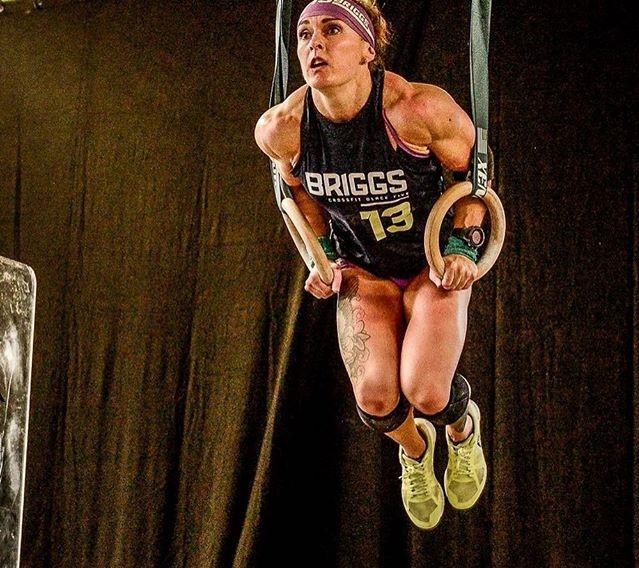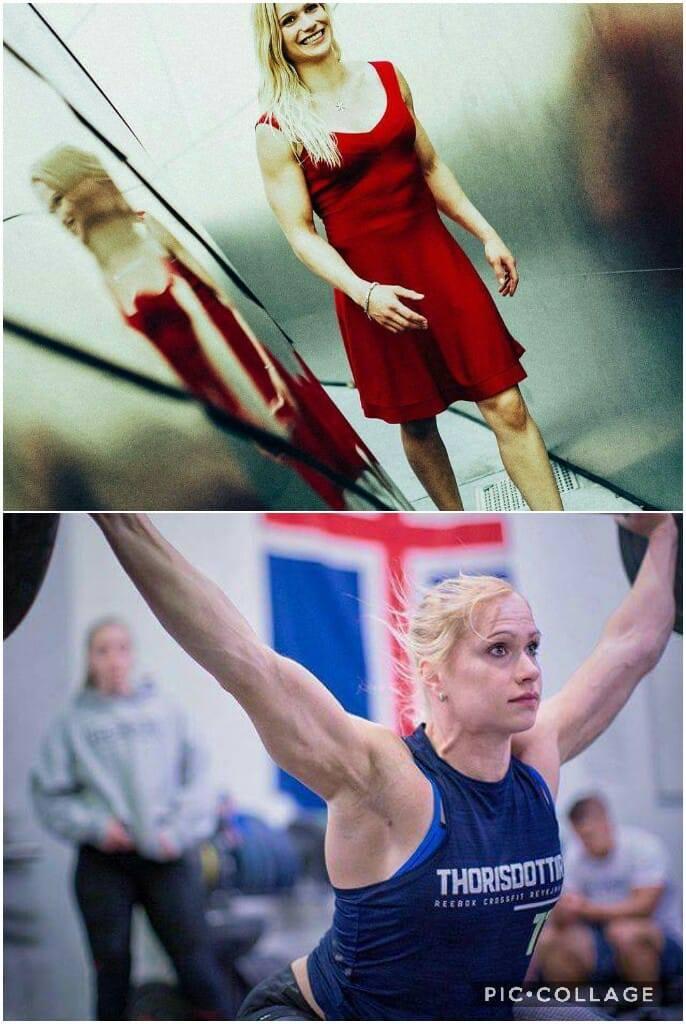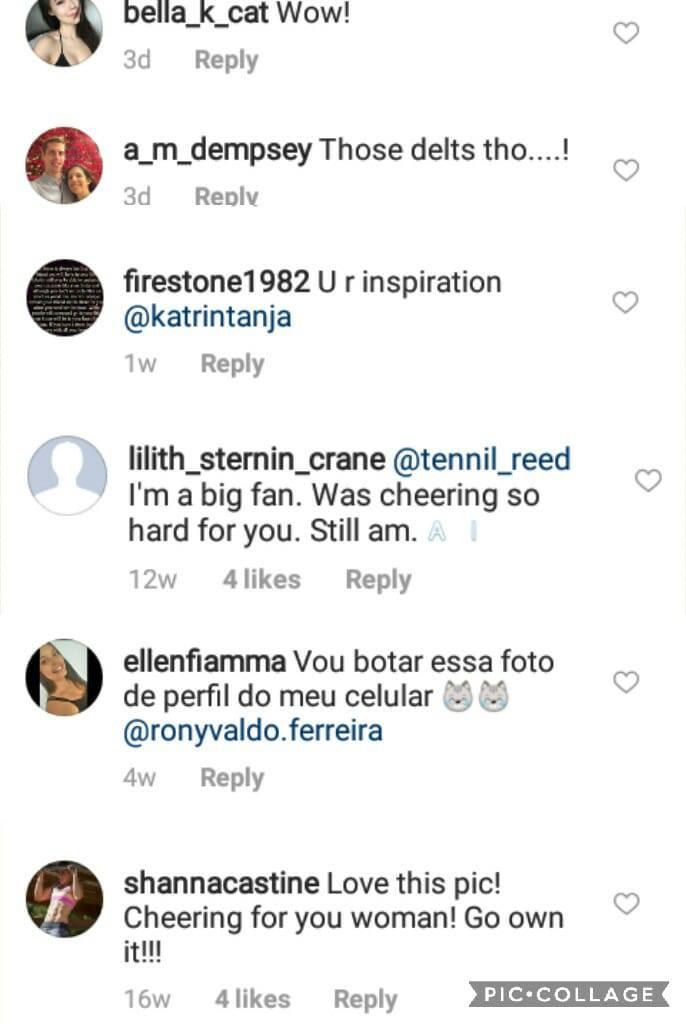
Too Butch for Heels? The CrossFit women of Instagram battle society's preconceived norms
This article is going explore the growing number of women around the world who are embracing the new worldwide craze of ‘CrossFit’, and with their own use of the social media platform Instagram illustrate the evolution and creation of new norms. Ultimately, the main aim of this article is to show that women do not have to choose between their body type and their femininity; the two are intertwined and blended together, creating micro-hegemonies (Blommaert & Varis, 2015).
CrossFit and what it means to be a woman
Women in today’s society face an enormous amount of images and opinions from multimedia conglomerates, many of which are operated by men, portraying what the so-called ‘normal’ or stereotypical female body shape should be like. For decades, women have based their worth and identity of what it is to be a female based on the images and opinions of the patriarchally controlled media and their singular definition and viewpoint of femininity. Femininity is defined as “behaviour or qualities regarded as characteristic of a woman” (Oxford English Dictionary, n.d.). It is in this definition that we as a western society, one that has been heavily influenced by the media, have created restrictive cultural and global standards of what it means to be a woman, both in actions and in appearance. Of course, other parts of the world may define femininity in a different way.
For decades, women have based their worth and identity of what it is to be a female on the images and opinions of the patriarchally controlled media and their singular definition and viewpoint of femininity.
Nevertheless, groups of women from around the world are going against these preconceived notions of what it means to be a woman. The main focus of this article will be on the women of CrossFit, a fitness phenomenon of the 21st century. This phenomenon is oriented around intense physical and sporting exercises, with many of these women creating new online communities through their images and videos posted on Instagram, exhibiting a new version of the female body. It is in this respect that women are taking back control of their own desired body type and shape, creating a new, more open view and outlook of what defines a woman’s femininity.
This motivational video posted to YouTube gives us just a brief glimpse of the growing trend of CrossFit for women, with regards to the increasing popularity of organised competitive events for both competitors and the public. Moreover, many videos similar to this highlight the hard work and dedication many CrossFit women put in, in order to reach personal goals, whether it be health improvement, weight loss, body shaping or success in competitions. It is in their involvement that many of these women face what can be described as drastic body changes, such as increased muscle mass, increased muscle definition and gaining what has been socially termed a more ‘masculine’ body type and losing their ‘femininity’, which has been heavily linked to one's body shape in today’s society.
New Social Platform for Change
Instagram has acted as a free platform for all, whether it's used by people who like posting cute images of cats or others who like creating monochrome, aesthetically pleasing, pictures. Female 'CrossFitters' took advantage of this free platform, to post images and videos of their varying body shapes. Their content also frequently shows them lifting heavy weights or just living their everyday life. Sharing these images on social media, by which a large audience can be reached, has lead to a slow, but positive, change in what was and is seen as stereotypically feminine, both in bodies and in actions.

Figure 1: Image of Samantha Briggs
By posting pictures of their private lives they can thus create an interconnected group of people. This type of interaction creates awareness for the numerous types of bodies a female of any age and ethnicity is capable of having. By seeing not just the stereotypical woman’s body, as portrayed in mainstream media, but also the bodies of women who don't fit into this mold, because they have a new vision of the female body as something that's being sculpted through hard work and dedication, patriarchal norms can be defied. Social media platforms like Instagram are giving society a greater awareness of the variety of body shapes available to women, but also show that someone's body shape doesn’t define their femininity, rather it is the woman herself who does this.
Crossfit women and micro-hegemonies
Many of the CrossFit women of Instagram do not just post images taken in the gym, but also post images from their everyday lives, wearing the clothes that they prefer, whether that involves wearing dresses, trousers or skirts.

Figure 2: Collage made by Ailish Tuohy of images taken of Annie Thorisdottir posted on Instagram
In this respect, a woman can define what it means to be feminine to her and not rely on the characteristics set out by mainstream media. We can see from these women’s Instagram accounts that they do not define themselves based on this singular aspect of their lives. They can be both muscular and have a great interest in fashion. They are not excluding their femininity by creating a more muscular female body shape, but rather they are redefining it.
As discussed in Blommaert and Varis (2015), life and its individualization is not constructed based on one aspect of life. It is rather a mix “of several micro-hegemonies valid in specific segments of life and behaviour” which “provides a different type of order, a complex order composed of different niches of ordered behaviour and discourses about behaviour” that leads to “what would make up ‘the’ identity of someone” (pp. 4-5).
They are not excluding their femininity in creating a more muscular female body shape, but rather they are redefining it.
Based on this approach, I believe that these women are redefining what it means to be either a ‘feminine’ woman or a muscular woman. They do not have to limit themselves to one identity; instead they have multiple. Their use of Instagram is slowly removing the constraints imposed on women by media conglomerates. They are giving light to other types of lives women can have and the differing body shapes that go along with it. It would seem that they are slowly changing the once culturally constraining norms of society. They are highlighting that what matters is the way a woman perceives her own body and by doing this, they are creating a new norm. I believe that this new norm is a multi-diversity of body shapes that should not be solely defined using old restrictive feminine characteristics, but rather a diverse range of characteristics as defined by each individual woman. This can therefore lead to numerous micro-hegemonies, based on each individual, creating a framework for one’s overall identity.
Athletic Women’s Attitudes & the Move for Change
There is a wide range of literature and research completed both in the past and also quite recently in relation to women and their involvement in physically intense sports. Due to the large amount of information available from past research surrounding this subject area, I will limit myself to just three brief discussions: areas used to change attitudes, the attitudes of sporting women on their bodies and finally the need for a change in discourse.
Using the media is undoubtedly one of the most effective ways to circulate new opinions and attitudes in order to incite social change, but what approach is the most effective for changing the attitude of society towards women who are involved in intense physical activity? A study by Messner (1988) discussed that “organized sport … defined largely by patriarchal priorities” is “an important arena in which emerging images of active, fit, and muscular women are forged, interpreted, contested and incorporated” (p.208). These types of results show us that what we need is to not only to increase the number of women engaging in sports typically associated with men, but to also increase the number of images of women with different body types and shapes in the media. This can encourage people, both online and offline, to get involved in public debates, creating a more increased awareness and potentially lead to a breakdown of the barriers created by society which have been further enforced by the media.
These types of results show us that what we need is to not only increase the number of women engaging in sports typically associated with men, but to also increase the number of images of women with different body types and shapes in the media.
-
Women in today’s society and those from past generations and societies have had, to some extent, some form of criticism or negative opinions on their body shapes and sizes. Critisism can come in many forms, whether they are perceived to be either too small or too big to fit into the media’s current ‘normal’ body shape.
A study by McCabe and Ricciardelli (2003) found that “media pressure to increase weight uniquely predicted both body image importance … and media pressure to decrease weight uniquely predicted body-image satisfaction and strategies to decrease weight” (p. 15). The type of control and influence the media has over minds and especially over that of young people who are still very impressionable is somewhat frightening.
These types of results highlight just how important it is that women who have taken back this control and power over their bodies are seen by others. One way to do that ia via social media. They show that there is not just one type of socially acceptable body for a woman and that it is each individual, not society, who defines what is acceptable for themselves.
Women who post their images on social media show that there is not just one type of socially acceptable body for a woman and that it is each individual, not society, who defines what is acceptable for them.
Another study by Krane, Choi, Baird, Aimar and Kauer (2004) found that female college athletes “considered their muscular bodies as the primary hindrance to being perceived as heterosexually feminine in social settings” and that “when they considered their athletic bodies in comparison to “normal girls” or the cultural ideal body, the athletes felt “different”” (p. 326). But, the overall positive outcome of the study showed that despite their differences, many felt pride in the achievements gained from their respected fields and felt more empowered in shaping their bodies (Krane et al., 2004).
The results of this study highlight the need for change not only for athletic women, like the CrossFit women of Instagram, but also for the everyday woman, as the ideal body of society that is portrayed in the media can affect and inhibit even the most confident of women.
Finally, the discourse surrounding CrossFit women is slowly becoming more positive as seen in the comments on many Instagram posts. Of course, at the moment there are still some types of negative comments posted from both men and women, but the positive side and its comments are becoming more common as time goes by.
The CrossFit women of Instagram show that we as individuals are made up of numerous aspects or ‘micro-hegemonies’ that make us who we are.
A study by Hall (1988) found that “the discourse of gender and sport is finally moving away from an exclusive and restrictive focus on women and femininity” (p. 338). These results illustrate the increasing change going on in society, and also the need for women on social media to put forward a more varied body type while embracing the body positivity that is often lacking in today's media platforms. The CrossFit women of Instagram show that we as individuals, as discussed in Blommaert and Varis (2015), are made up of numerous aspects or ‘micro-hegemonies’ which make us who we are. The changing discourse highlights a move towards a wider acceptance of all female body shapes and the slow breakdown of the confining cultural norms surrounding femininity.

Figure 3: Snapshots taken by Ailish Tuohy of positive comments posted in different languages on female ‘CrossFitters’ Instagram accounts
Are these women making a difference?
The evidence found and used in this short paper suggests that the CrossFit women of Instagram are making a difference, no matter how small, in addressing the problems faced by women in today’s society. To recap, some of these problems include the pressure for women to embody socially expected standards, both in their body shape and actions, tolerate socially established norms enforced by the media and most importantly how women themselves view their own bodies.
Based on the work of Blommaert and Varis (2015) we can state that the CrossFit women of Instagram have an identity which is made up of opposing micro-hegemonies that go against societal norms. These women do not allow for societal norms to define them; they define themselves. They act as an example for other women, both young and old, in highlighting the fact that you can be numerous things at the same time. They are redefining society's culturally defined norms on what it means to be feminine and showing you that you can be, in this case, both extremely muscular in body shape and also feminine through their own personal social media accounts from around the world. Overall, these women are operating on a worldwide platform. This platform is accessible to millions of people and exposes them to the possibilities and positivity in seeing different body shapes and the lifestyles that go along with them. This in turn reduces some of the power, control and influence of the media’s idealized female body shape. By taking control away from media conglomerates, these women are changing what is seen by media consumers and are highlighting that not only is a stronger, more defined body achievable through exercise an acceptable body shape for women, but they are also redefining what can be considered femininity.
They are showing you that you can be both extremely muscular in body shape and also feminine.
To conclude, these women are making a difference in changing culturally accepted norms, but there is still a long way to go, both in society and in the messages from the privately controlled media.
References
AT Motivation. (2017, September 19). CrossFit Motivation – Women [Video File]. Retrieved from https://www.youtube.com/watch?v=SLFmQcNuUY8
Blommaert, J., & Varis, P. (2015). Enoughness, accent and light communities: Essays on contemporary identities. Tilburg Papers in Culture Studies, 139.
Femininity. (n.d.). In OED online (3rd ed.). Retrieved from http://www.oed.com/view/Entry/69190?redirectedFrom=femininity#eid
Hall, M. A. (1988). The Discussion of Gender and Sport: From Femininity to Feminism. Sociology of Sport Journal, 5(4), 330-340. https://doi.org/10.1123/ssj.5.4.330
Krane, V., Choi, P. Y. L., Baird, S. M. ,Aimar, C. M., & Kauer, K. J. (2004). Living the Paradox: Female Athletes Negotiate Femininity and Masculinity. Sex Roles, 50(5-6), 315-329. https://doi.org/10.1023/B:SERS.0000018888.48437.4f
McCabe, M. P., &Ricciardelli, L. A. (2003). Sociocultural Influences on Body Image and Body Changes Among Adolescent Boys and Girls. The Journal of Social Psychology, 143(1), 5-26. http://dx.doi.org/10.1080/00224540309598428